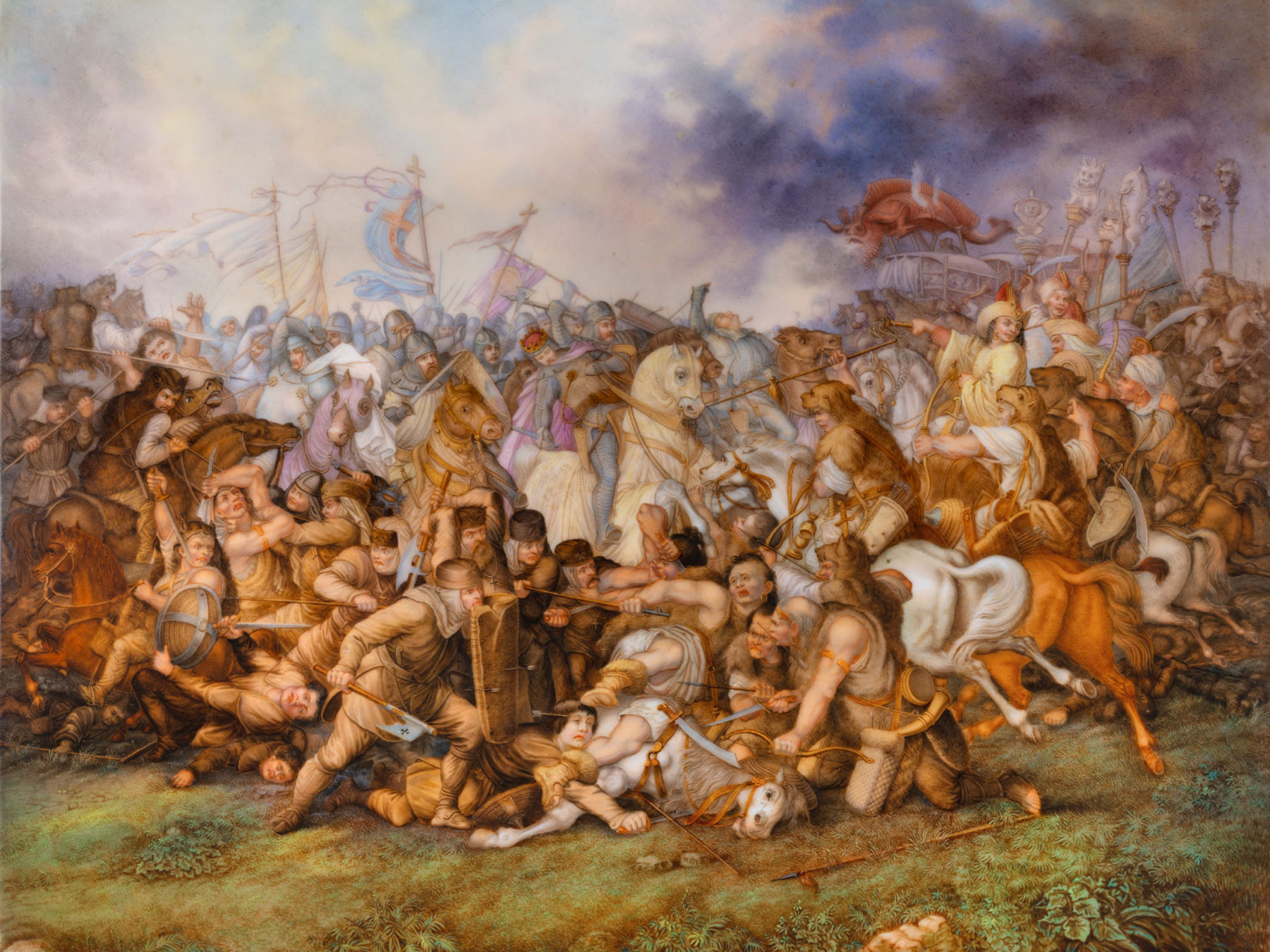Our Lady Help of Christians of Wrocław
The Wrocław image of Our Lady Help of Christians is a faithful copy of the Madonna of Passau. Its first owner was Countess Catherine Dvorak (de domo Schlick) from 1614, and the painting was kept in a house chapel in Prague. Countess Catherine, dying, bequeathed the painting to Princess Maria Zarub, Baroness Lissar. The painting was housed in the castle chapel in Zumberg, Bohemia, for more than thirty years.
The Duchess’s confessor was Jesuit Father Zdenek Geżewski, through whom she learned about the Counter-Reformation work of the Society of Jesus. Wanting to help the restoration of Catholicism in Breslau through the newly established Jesuit institution, the University, she donated the painting to the newly built Church of the Name of Jesus to the vice provincial of the Czech Jesuit province, Father Jacob Willi. The painting, on the day of the church’s consecration on July 30, 1698, was brought inside by the provincial in a solemn procession and placed in a side chapel on the north side.
The iconography of the painting belongs to a wide circle of representations of Madonnas, which derive their origin from the Greek representation of Our Lady of Eleusa (Greek: merciful), spread strongly in the 10th century in Byzantium, probably due to the rich emotional message contained in these icons. Standing on Mary’s lap, the infant Jesus caressing her left cheek to her face, embracing her neck with his hand, creates an atmosphere of warmth and joy flowing from the closeness of Mother and Child. The Mother of God, as if not reciprocating this joy is plunged into sadness and reverie over the irreversible future of her Son’s passion. This depiction reached, via knights returning from the Crusades, Western Europe and became widespread in art as early as the 12th century. At the same time, the Madonna of Eleusa was gaining popularity in the East, reaching Russia and closing in on an icon canon that continues to this day, the oldest example of which is Our Lady of Vladimir.
Gigapixels
)
)
)
)
)
)
)
)
)